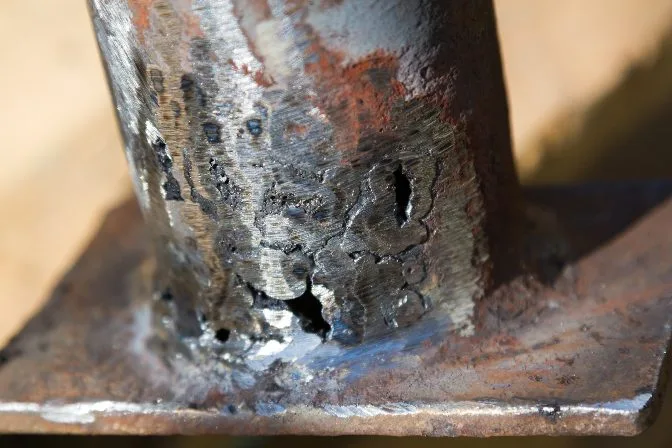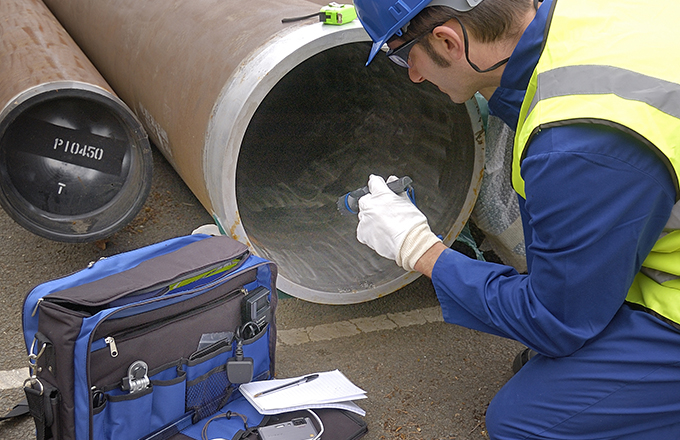Recognizing the Relevance of Welding Evaluation in Ensuring Structural Integrity and Safety And Security Throughout Different Industries
Welding evaluation is a vital process that safeguards architectural integrity and safety throughout diverse industries. As we explore the complexities of welding evaluation, the question arises: what are the most important factors that add to reliable inspection processes?
Function of Welding Examination
While the stability of welded frameworks is vital to safety and security and performance, the duty of welding evaluation can not be overstated. Welding inspection acts as an important quality assurance process that makes sure the adherence to developed criteria and requirements throughout the welding procedure. By methodically evaluating welds for flaws, incongruities, and non-compliance, assessors play an essential role in protecting the stability of structures throughout different markets.
Welding assessments include a series of activities, from pre-weld evaluations to post-weld examinations. These evaluations not only determine prospective issues before they rise but also boost the general reliability and life-span of welded elements. Welding Inspection Milwaukee. Evaluations assist to confirm the ability and competencies of welders, making certain that welding procedures are implemented appropriately and products work
Furthermore, a strenuous examination method cultivates compliance with regulatory requirements and market standards, decreasing the danger of disastrous failings. By promoting a society of safety and responsibility, welding assessment contributes significantly to both functional and financial effectiveness. Altogether, the role of welding inspection is indispensable, as it underpins the quality, safety, and durability of bonded structures vital to modern facilities and industry.
Types of Welding Assessments
Comprehending the numerous types of welding assessments is crucial for preserving the top quality and safety of welded structures. Welding evaluations can be categorized right into several types, each offering a certain objective in the assessment procedure.
Aesthetic inspection is one of the most essential kind, entailing a mindful exam of the welds with the naked eye or through zoom. This technique helps determine surface area issues such as splits, incomplete blend, or too much spatter.
These approaches enable assessors to examine the honesty of welds without endangering the product's framework. Ultrasonic screening makes use of high-frequency sound waves to identify internal imperfections, while radiographic screening utilizes X-rays or gamma rays to imagine interior weld attributes.
Harmful screening, though less common, entails literally testing examples to understand the weld's mechanical buildings. Each kind of evaluation adds to a thorough evaluation, ensuring that welding satisfies industry criteria and safety needs.
Market Criteria and Laws
Developing industry requirements and policies is crucial for making certain the safety and security and integrity of welded frameworks. These standards act as benchmarks for safety, performance, and high quality, assisting makers and assessors in the execution of welding processes. Different companies, such as the American Welding Culture (AWS) and the International Organization for Standardization (ISO), have actually developed comprehensive requirements that determine treatments for welding techniques, certification of welders, and examination strategies.
Compliance with these regulations not only improves the top quality of welds but also decreases risks related to structural failures. Certain codes, such as the ASME Boiler and Stress Vessel Code, rundown demands look at here now for the building and construction of pressure vessels, guaranteeing they can stand up to operational anxieties. Furthermore, local and nationwide guidelines commonly mandate adherence to these market requirements, strengthening their relevance throughout fields like construction, aerospace, and automotive manufacturing.
Routine updates to these criteria reflect innovations in innovation and welding strategies, guaranteeing that safety procedures stay pertinent. Therefore, a comprehensive understanding and application of these criteria is important for welding professionals, fostering a society of safety and security and high quality in welded frameworks.
Consequences of Poor Inspections
Poor inspections can bring about extreme effects in the welding industry, threatening the extremely criteria and guidelines developed to guarantee safety and security and more structural stability. The consequences of poor assessments can materialize in numerous kinds, from instant safety risks to long-lasting architectural failures. Among the most disconcerting outcomes is the capacity for catastrophic mishaps, which can cause significant injury or loss of life. In sectors such as production, building and construction, and aerospace, the effects of low quality welding can endanger whole structures or parts, resulting in expensive fixings and extensive downtime (Welding Inspection Milwaukee).
In addition, poor assessments can taint a company's reputation and result in lawful consequences, including penalties and litigation. Eventually, the implications of poor inspections prolong beyond specific projects, impacting industry-wide criteria and public assumption, therefore emphasizing the essential requirement for extensive and effective welding assessments.
Ideal Practices for Effective Assessments
Reliable welding evaluations are extremely important to making certain the stability and safety and security of welded frameworks. To accomplish optimum results, assessors have to comply with numerous best practices that enhance the evaluation procedure.

Secondly, examiners ought to possess the required certifications and certifications relevant to the welding procedures and materials being taken a look at. Recurring training and specialist development are crucial to staying upgraded on market requirements and technical improvements.
In addition, making use of proper assessment devices and methods, such as visual inspections, ultrasonic screening, and radiographic analyses, is crucial for spotting defects that can jeopardize structural integrity.
Last but not least, detailed paperwork of the assessment process is essential. This consists of recording findings, photos, and any type advice of rehabilitative activities taken. Accurate and clear reporting not just facilitates accountability yet also help in future evaluations and maintenance. By applying these ideal techniques, organizations can dramatically improve the effectiveness of their welding evaluations and ensure secure, reputable procedures.
Conclusion

In final thought, welding examination is vital for keeping structural honesty and safety and security throughout numerous industries. Prioritizing reliable welding evaluations is imperative to ensure the safety and security of workers, properties, and general operational integrity.

As we explore the complexities of welding evaluation, the question emerges: what are the most vital aspects that contribute to efficient examination processes?
Welding assessment offers as a vital top quality control process that guarantees the adherence to developed requirements and requirements throughout the welding procedure. In sum, the function of welding examination is crucial, as it underpins the high quality, security, and durability of bonded structures necessary to modern-day framework and sector.
Numerous organizations, such as the American Welding Society (AWS) and the International Organization for Standardization (ISO), have developed comprehensive requirements that dictate procedures for welding methods, credentials of welders, and examination techniques.
Ultimately, the ramifications of poor evaluations expand beyond specific tasks, influencing industry-wide standards and public understanding, therefore highlighting the critical need for reliable and extensive welding assessments.